QuestionWe have a 10 month old yellow lab named Max. We have recently inherited some houseplants and Max is having a hard time staying away from them. Any ideas on how to keep him away? He can be very stealthy about it. I know some houseplants can be toxic to animals so it is a concern.
Also, Max will find a sock or something that he isn't supposed to have and suddenly it will become a game of keep away to him. I tell him to sit (which he knows how to do) and it doesn't phase him. He just keeps running around happily. My husband wants to start to use a shock collar to teach him this isn't acceptable behavior. I'm concerned that this is a cruel way of training him. Would appreciate your opinion.
Thank you so much!
Dawn
AnswerThe shock collar is best left to experienced trainers in certain special cases, not general use.
Damaged possessions are the fault of whoever was watching the puppy. When you are watching it, immediately correct it as soon as it goes for anything except its own toys. In a quiet, but firm voice give it an ''Ah, ah, ah!'' and offer it one of its toys. Once it has a sock or something, tell him ''Max, drop it!'' in a firm voice, and hold eye contact until the puppy drops it. Don't repeat the command or chase him. You may have to resort to a spray bottle for stronger willed dogs. Adding a little lemon juice of vinegar to the water makes it more effective. Out of 18 puppies, our 7 month old Lab Zanthe is the first we have had to use it.
When you can't watch him, crate him. It is only natural that a puppy resists its crate at first. What the puppy wants more than anything else is to be others, you, anyone else in the household, and any other pets. In our modern society, even if we are home, other things distract us from the attention an uncrated puppy must have. The only real solution is to crate the dog when you aren't around. The dog may be happier in its den than loose in the house. It relaxes, it feels safe in its den. It rests, the body slows down reducing the need for water and relieving its self. Dogs that have been crated all along do very well. Many of them will rest in their crates even when the door is open. I think the plastic ones give the dog more of a safe, enclosed den feeling. Metal ones can be put in a corner or covered with something the dog can't pull in and chew. Select a crate just big enough for the full grown dog to stretch out in.
Leave it some toys. Perhaps a Kong filled with peanut butter. Don't leave anything in the crate the dog might chew up. It will do fine without even any bedding. You will come home to a safe dog and a house you can enjoy.
A dog that has not been crated since it was little, may take some work. Start out just putting its toys and treats in the crate. Praise it for going in. Feed it in the crate. This is also an easy way to maintain order at feeding time for more than one dog.
The "shut the puppy in a safe room" is a fallacy. Very few houses even have a safe room. How many of us have a room with a hard surfaced floor and nothing else? Most rooms have electrical cords to chew if nothing else. In addition to destroying anything a bored puppy finds to chew, it may choke or have intestinal blockage from the pieces. I had a friend that left her dog in a "safe" room. It ate a hole in the floor covering. The safe rooms fail to give the dog the comfort of the enclosed space their instinct requires. Nor do they restrict activity extending the time the dog can go without relieving itself.

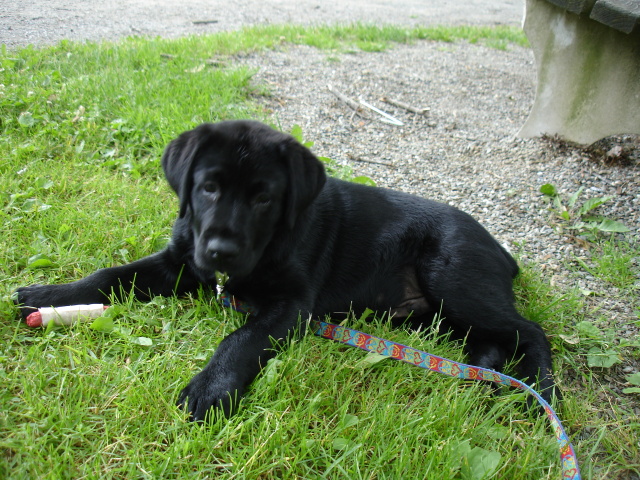 Is my lab puppy growing to fast?
Questionjust hanging out!
QUESTION: I recently t
Is my lab puppy growing to fast?
Questionjust hanging out!
QUESTION: I recently t
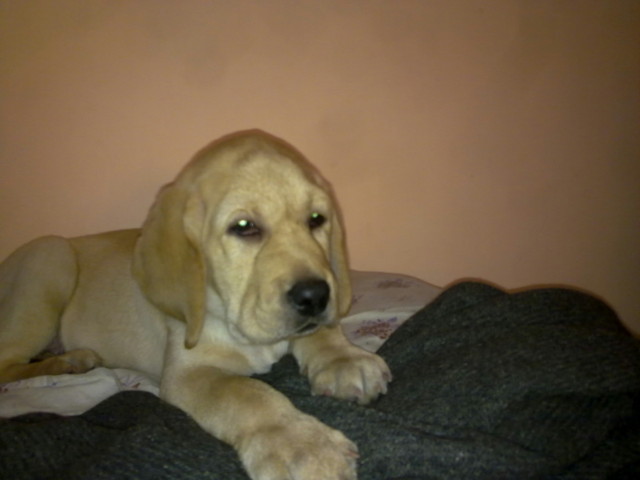 the furious nature of my lab
Question
hero-male lab
he is a fawn coloured 3 and a ha
the furious nature of my lab
Question
hero-male lab
he is a fawn coloured 3 and a ha
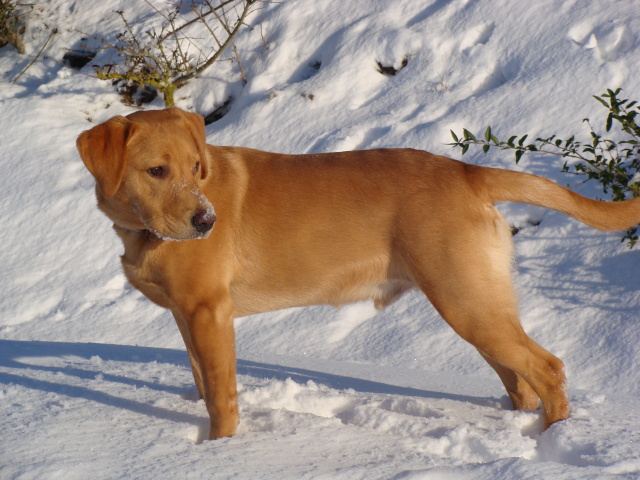 Fox Red/Yellow Lab size query
Question
Hi,
I have a 6 1/2 Fox Red/Yellow lab (Pedig
Fox Red/Yellow Lab size query
Question
Hi,
I have a 6 1/2 Fox Red/Yellow lab (Pedig
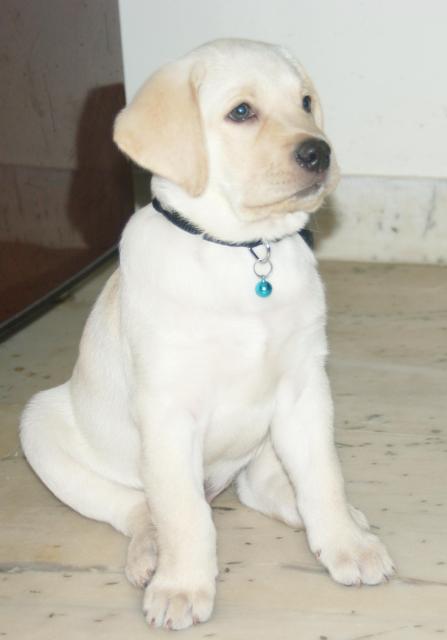 Need opinion about my Labrador Retriever
QuestionCoco (Labrador Retriev
QUESTION: I have
Need opinion about my Labrador Retriever
QuestionCoco (Labrador Retriev
QUESTION: I have
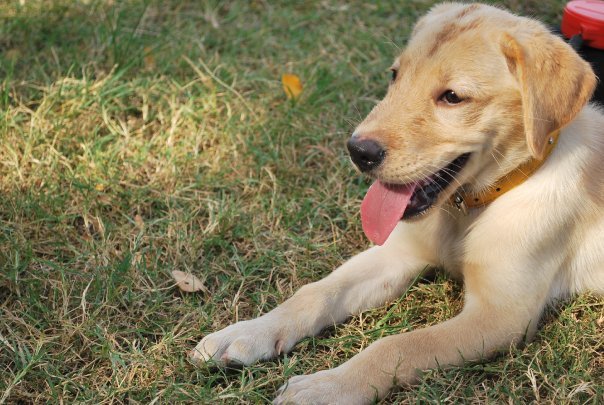 vitamins for my yellow lab
Questionbruno
QUESTION: what is the best vitamin
vitamins for my yellow lab
Questionbruno
QUESTION: what is the best vitamin